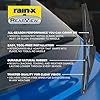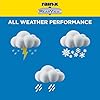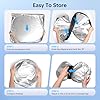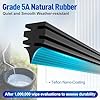Table of Contents
Many homeowners wonder if their insurance covers cars. They also ask if they can get car insurance from their home. Car insurance is key to protecting your finances in case of an accident. In 2020, medical costs from fatal car accidents were over $537 million. This shows how vital it is to have enough coverage.
To get the best homeowners and car insurance quotes, you need to know the basics. Understanding car insurance and how to buy it is crucial.
When looking for homeowners car insurance, consider what you need, the cost, and the company’s reputation. Getting car insurance near you can be convenient and offer personalized service. With car insurance costs rising, many are looking for ways to save. The 2023 Policygenius Car Insurance Affordability Survey found that 43% of drivers paid more in April 2023 than they did a year before.
Key Takeaways
- Homeowners insurance does not typically cover cars, but bundling home and auto insurance can provide discounts and convenience.
- Car insurance helps protect finances by covering resulting bills in case of an accident.
- Understanding coverage needs and comparing quotes from at least three companies is essential when buying car insurance.
- Pricing should not be the sole determining factor when choosing an insurance policy.
- Home and auto insurance bundles can result in significant savings, with an average discount of 15% per year.
- It’s crucial to ensure continuous coverage, especially when transitioning between policies or insuring a new vehicle.
Understanding the Basics of Homeowners Car Insurance How To
Protecting your home and vehicle is key. Homeowners car insurance, or home and auto insurance, covers both. To get the cheapest car and homeowners insurance, knowing the basics is crucial.
This insurance is a deal between you and an insurance company. You pay premiums, and they cover damages or losses to your home and car. You can find homeowners car insurance open now and book online appointments homeowners car insurance to talk about your options.
What Defines Homeowners Car Insurance
Homeowners car insurance includes four main types of coverage. These are structural, personal property, liability, and additional living expenses. Make sure your policy fits your needs and offers enough coverage.
Key Coverage Components
Homeowners car insurance has several key parts:
- Structural coverage for your home and detached structures
- Personal property coverage for your belongings
- Liability coverage in case of accidents or injuries
- Additional living expenses coverage if you need to temporarily relocate
Common Misconceptions
Many think homeowners car insurance covers all damages or losses. But, it doesn’t cover damage from flooding, earthquakes, or other “acts of God.” Knowing what’s covered and what’s not is important to avoid surprises.
Understanding homeowners car insurance basics helps you make better choices. You can find the best insurance rates for your needs.
| Type of Coverage | Description |
|---|---|
| Structural Coverage | Covers damages to your home and detached structures |
| Personal Property Coverage | Covers damages to your personal belongings |
| Liability Coverage | Covers costs in case of accidents or injuries |
| Additional Living Expenses Coverage | Covers temporary living expenses if you need to relocate |
The Relationship Between Home and Auto Coverage
Protecting your home and vehicle is key. The right insurance policies are essential. For example, car and homeowners insurance for veterans offers special coverage.
Homeowners insurance covers your home and belongings. Auto insurance protects your vehicle. But, homeowners insurance can also cover car break-ins if they happen on your property. It’s important to know how home and auto coverage work together.
When picking insurance, think about coverage limits, deductibles, and what’s not covered. For instance, replacement cost coverage helps fix or replace your home and stuff at today’s prices. Also, personal liability protection pays for legal and medical costs if you damage someone else’s property or hurt them.
Reviewing and updating your insurance regularly is vital. This is especially true after big changes in your life, like renovations. This way, you make sure you have the right insurance for your needs and budget.
Benefits of Bundling Home and Auto Insurance
Bundling home and auto insurance offers many benefits. You can save money, enjoy convenience, and get better coverage. Bundling can save you up to 18% on your insurance costs. For example, if you spend $5000 a year on insurance, you could save $900.
Some companies, like Nulty Insurance, give discounts for bundling auto and homeowner’s insurance. Progressive also offers discounts for bundling different types of insurance. When looking for the best home and car insurance bundle, consider the cheapest homeowners insurance colorado and the best home and car insurance bundle for seniors.
Here are some benefits of bundling home and auto insurance:
- Cost savings: Bundling can result in significant discounts on insurance premiums.
- Convenience: Managing insurance policies under one company can simplify the process.
- Coverage advantages: Bundling can provide additional coverage options and enhance overall protection.
In conclusion, bundling home and auto insurance offers many benefits. You can save money, enjoy convenience, and get better coverage. It’s important to research and compare different insurance companies to find the best option for you.
| Insurance Company | Multi-Policy Discount | Coverage Options |
|---|---|---|
| Progressive | Up to 18% | Auto, Home, Renters, Motorcycle, Boat |
| Nulty Insurance | Up to 15% | Auto, Home, Renters |
When Homeowners Insurance Affects Your Vehicle
Homeowners insurance can impact your vehicle in some cases, like if it’s parked in your driveway. Home and auto insurance bundle comparison helps you see how your policy might affect your car. For example, if a tree branch damages your car in your driveway, your homeowners insurance might cover it.
In Colorado, best homeowners insurance colorado companies might include car coverage. USAA insurance also offers a variety of insurance, including for homes and cars. It’s key to compare rates and options to find the best policy for you.
When looking at home and auto insurance bundle comparison, consider these factors:
- Coverage limits and deductibles
- Premium costs and discounts
- Policy exclusions and limitations
Knowing how your homeowners insurance might affect your car helps you make smart choices. This way, you can ensure you have the right protection.
| Insurance Company | Coverage Options | Premium Costs |
|---|---|---|
| USAA | Home and auto insurance bundles | Varying premium costs |
| State Farm | Home and auto insurance bundles | Varying premium costs |
| Allstate | Home and auto insurance bundles | Varying premium costs |
Coverage for Cars Parked on Your Property
Protecting your vehicles is key. If you have a bundle home and auto insurance policy, knowing what’s covered is important. A homeowners car insurance company usually covers damage from driveway incidents, garage issues, and tree damage.
Wondering if homeowners insurance covers vandalism or theft? Yes, it does. But how much depends on your policy. If you want the best homeowners car insurance, check your policy details. Some policies cover vandalism, while others might need extra coverage.
Here are some key points to consider for cars parked on your property:
- Comprehensive coverage protects against vandalism, theft, and other non-collision incidents.
- Collision coverage isn’t needed for parked cars but is crucial if you drive them.
- Property damage liability coverage helps pay for damages to other property in an accident.
Remember, letting insurance lapse can raise your premiums or make it hard to get new insurance. Insurers see those without insurance as higher risk. By picking a good homeowners car insurance company and a bundle home and auto insurance policy, your vehicles are safe, even when parked.
| Type of Coverage | Description |
|---|---|
| Comprehensive Coverage | Covers vandalism, theft, and other non-collision incidents. |
| Collision Coverage | Covers damages to your vehicle in the event of a collision. |
| Property Damage Liability Coverage | Covers damages to other property, such as fences or buildings, in the event of an accident. |
Vehicle Theft Protection: Home vs Auto Insurance
Protecting your vehicle from theft is crucial. It’s important to know the difference between home and auto insurance. Tips for buying homeowners car insurance highlight the need for comprehensive coverage. This can help pay for a stolen vehicle if it’s not found. But, auto insurance doesn’t cover personal items stolen from your car.
To find the best homeowners car insurance coverage, compare quotes. Comprehensive coverage costs about $12 a month at Progressive. Some insurers offer discounts for cars with alarms or tracking devices.
Here are some key points to consider for vehicle theft protection:
- Comprehensive coverage may pay for the actual cash value (ACV) of a stolen vehicle
- Custom parts and equipment coverage can cover stolen aftermarket additions
- Gap coverage can cover the difference between loan amount and ACV
- Home insurance may cover personal items stolen with the car, less the deductible
To prevent car theft, lock windows and doors, use your garage, and avoid hiding spare keys in your car. Backing rear-wheel drive cars into your driveway can also make them harder to steal. With the right insurance and precautions, you can protect your vehicle and personal property from theft.
Always compare homeowners car insurance quotes and consider comprehensive coverage costs. With the right insurance and precautions, you can enjoy peace of mind and protect your investment.
| Insurance Type | Coverage | Cost |
|---|---|---|
| Comprehensive | Covers stolen vehicle, custom parts, and equipment | Around $12 per month at Progressive |
| Liability | Does not cover stolen vehicle | Varies depending on provider and policy |
| Gap | Covers difference between loan amount and ACV | Varies depending on provider and policy |
Vandalism and Break-in Coverage Options
When picking the right homeowners car insurance, knowing the coverage options is key. Vandalism and break-in coverage are vital parts of comprehensive insurance. They help protect against damages from these incidents. The cost of insurance can change based on the company, state, and deductible, which can range from $0 to $2,000.
To save on insurance, consider parking in safe spots or garages. Fixing damages quickly can also help, like preventing rust from scratches. Having a reliable body shop give a quote fast is crucial for a smooth claim process.
Personal Property Protection
Comprehensive car insurance covers damage not caused by the driver, like vandalism and theft. It can also cover stolen parts, like catalytic converters. A 2016 Travelers Insurance report found property crime claims rise 24% on Halloween.
Vehicle Damage Claims
Filing a claim for vandalism might raise your rates, depending on the company and state. But, if repairs cost more than your deductible, it might be worth it. Always check your policy and understand the terms before deciding.
Documentation Requirements
When making a claim, detailed documentation is essential. This includes photos, repair quotes, and police reports. Knowing what’s needed helps ensure a smooth claim process. This way, homeowners can protect their vehicles from vandalism and break-ins.
| Incident Type | Claim Increase | Documentation Requirements |
|---|---|---|
| Vandalism | Potential rate increase | Photos, repair quotes, police reports |
| Theft | Potential rate increase | Photos, police reports, vehicle identification number |
Top Insurance Companies for Home and Auto Bundles
When looking at homeowners car insurance, it’s key to compare different options. A guide to buying homeowners car insurance can help you choose wisely. Companies like USAA and State Farm offer big discounts for bundling home and auto insurance.
For example, comparing insurance rates can reveal the best deal for you. Allstate, Farmers, and Nationwide give discounts of 20% to 25%. These can save you a lot on your insurance costs.
Here are some important stats to think about when picking an insurance company:
- Allstate: up to 25% bundle discount, with average annual premiums of $2,892 for car insurance and $1,959 for home insurance
- State Farm: up to $1,273 bundle discount, with average annual premiums of $2,624 for car insurance and $1,854 for home insurance
- Nationwide: up to 20% bundle discount, with average annual premiums of $3,184 for car insurance and $1,681 for home insurance
It’s important to look at these options carefully. Consider coverage, cost, and customer service. This way, you can pick the best insurance company for you and save money by bundling.
Understanding homeowners car insurance and following the best tips can guide you in choosing the right insurance company. A detailed guide to buying homeowners car insurance can offer valuable advice. It helps you feel confident in your decision.
Finding the Best Insurance Rates for Your Situation
To find the best insurance rates, consider several factors. Look for discounts and compare quotes from different companies. Knowing what homeowners car insurance covers and comparing quotes helps you make smart choices. It’s important to think about your specific needs and situation when looking for affordable insurance.
Many things can change your insurance rates. Your age, driving history, credit score, and where you live are important. For example, a good credit score can lower your costs. Also, checking car insurance prices every six months to a year can help you save money. This is because insurance companies often only look at your driving history from the last few years.
Some key things to think about when looking for the best insurance rates include:
- Comparing quotes from at least three insurance companies to find the best fit for your risk profile
- Exploring discount opportunities, such as those for having a garage or a good credit score
- Understanding the factors that affect insurance rates, including age, driving history, credit tier, and location
By understanding your insurance options and comparing quotes, you can find the best rates. This way, you can enjoy affordable homeowners car insurance coverage. Always check your policy and update it as needed to get the best value for your money.
| Insurance Company | Average Premium | Discount Opportunities |
|---|---|---|
| Company A | $1,200 | Good credit score, garage |
| Company B | $1,500 | Good driving history, multi-policy discount |
| Company C | $1,800 | Bundle home and auto insurance, loyalty discount |
Special Considerations for Different Property Types
Homeowners car insurance needs vary by property type. Condos, townhouses, and other properties have unique needs. Expert advice on homeowners car insurance can guide you in finding the right coverage.
Experts say top insurance companies for homeowners car insurance offer policies for different properties. HO-6 policies are for condos, while HO-8 is for older homes. To choose the right policy, assess your property’s value, consider your lifestyle, and evaluate your budget.
When picking homeowners car insurance, consider these factors:
- Property value and location
- Type of property (condo, townhouse, single-family home, etc.)
- Personal belongings and valuables
- Liability coverage and personal injury protection
By considering these factors and seeking expert advice on homeowners car insurance, you can find the best coverage. Always compare policies from top insurance companies for homeowners car insurance to get the best deal.
Finding the right homeowners car insurance for your property type needs careful planning. Follow steps to getting the right homeowners car insurance and work with a reputable company. This way, you can protect your property and finances from unexpected events.
| Property Type | Insurance Policy | Coverage |
|---|---|---|
| Condo | HO-6 | Building, personal property, liability |
| Townhouse | HO-3 | Building, personal property, liability |
| Single-Family Home | HO-3 | Building, personal property, liability |
Filing Claims: Home vs Auto Insurance
Filing claims for homeowners car insurance is a big step. It’s important to know the process and what’s needed. Companies like Travelers Insurance help you decide if you should file a claim. They say it’s about looking at your coverage and how it might affect your premiums.
Knowing when to use home or auto insurance is key. For example, auto insurance covers damage from things other than accidents. Liability insurance, on the other hand, makes the driver at fault pay. To save money, think about these options carefully.
Claims Process Overview
The claims process starts with checking damages and looking at your coverage. You’ll need to give details like incident reports and photos. It’s important to give clear evidence for a successful claim.
- Minimal damage: If the damage is minor, it may not be worth filing a claim.
- Excluded damages: Knowing what’s not covered is key to avoid unnecessary claims.
- Wear and tear: Insurance doesn’t cover normal wear and tear, so it’s important to tell the difference.
Understanding the claims process and your coverage can help you save money. Remember, about 1 in 20 homeowners file a claim each year. Car insurance claims also go up every year, says the Insurance Information Institute.
Understanding Policy Exclusions and Limitations
When looking at homeowners car insurance, it’s key to know about exclusions and limits. This helps you find affordable coverage that fits your needs. Reading your policy documents well and using tips for selecting the right policy is crucial. You should also check the exclusions and limits that might impact your coverage.
Homeowners policies often don’t cover floods, earthquakes, or nuclear damage. Car insurance might not cover all types of damage or loss. To understand these exclusions better, compare quotes online and look at policy documents from various insurers.
When checking policy exclusions and limits, keep an eye out for:
- Named-perils coverage, which lists specific covered perils
- All-risk coverage, which covers all losses except those excluded
- Conditions, like filing a proof of loss and cooperating in investigations
- Endorsements and Riders, which can change the original insurance contract
By carefully looking at exclusions and limits, you can make smart choices. This way, you can find affordable coverage that suits your needs. Always compare quotes online and use tips for selecting the right policy to get the best coverage for your home and car.
Understanding policy exclusions and limits is essential for the right insurance for your home and car. By reviewing policy documents and comparing quotes online, you can make informed choices. This helps you find affordable coverage that meets your needs.
| Policy Type | Exclusions | Limitations |
|---|---|---|
| Homeowners | Flood, earthquake, nuclear radiation | Named-perils coverage, all-risk coverage |
| Car Insurance | Certain types of damage or losses | Conditions, endorsements, and riders |
Tips for Maximizing Your Insurance Coverage
Maximizing your insurance coverage means knowing your options and making smart choices. Working with top homeowners car insurance companies can help. They offer personalized advice and support. By understanding coverage options, you can get the most from your policy and stay protected.
It’s key to regularly check your policy and update your coverage as needed. This can help you save on insurance costs. Many companies also offer discounts for bundling policies or having a clean driving record. These can lower your expenses.
Here are some tips to maximize your insurance coverage:
- Shop around for quotes from different companies to find the best rates.
- Take advantage of discounts for good grades, military service, or low mileage.
- Consider higher deductibles to lower your premiums.
By following these tips and choosing a reputable insurance company, you can save money on insurance premiums. Always review your policy carefully and ask questions if you’re unsure about anything.
Common Mistakes to Avoid When Insuring Home and Auto
Insuring your home and auto comes with common mistakes to steer clear of. One big error is not reading your policy carefully. This can cause confusion about what’s covered and what’s not. It’s key to review your policy and know what to look for.
Another mistake is not looking for the best rates. To find the best homeowners car insurance, compare quotes from different insurers. This can help you save money and get the right coverage for your needs.
Some common mistakes to avoid include:
- Not increasing your deductible to lower your premium payments
- Not purchasing enough bodily injury protection
- Not considering separate coverage for flood, earthquake, or sewer backups
By avoiding these mistakes and understanding your policy, you can protect your home and auto. Always review your policy and make changes as needed. This ensures you get the best coverage at a good price.
It’s also essential to consider the following table when reviewing your policy:
| Coverage Type | Recommended Limit |
|---|---|
| Bodily Injury Protection | $100,000 per person, $300,000 per accident |
| Property Damage | $50,000 |
| Collision | Varies by vehicle value |
By following these tips and avoiding common mistakes, you can ensure you have the right homeowners car insurance coverage in place to protect your assets.
Conclusion: Making the Right Insurance Choices for Your Home and Car
When dealing with homeowners car insurance, it’s crucial to make smart choices. These choices should protect your belongings and give you peace of mind. Knowing your coverage options and finding ways to save can help. This way, you can make sure your home and car are well-protected.
When looking for homeowners car insurance, consider the costs, deductibles, and discounts. Getting your home and auto insurance from the same company can save you up to 25%. Also, driving safely and adding security features can lower your premiums.
The right insurance choices depend on your situation. This includes your home type, driving record, and what coverage you need. Talk to local agents or use online tools to compare options. This will help you find the best and most affordable coverage for you.

















































